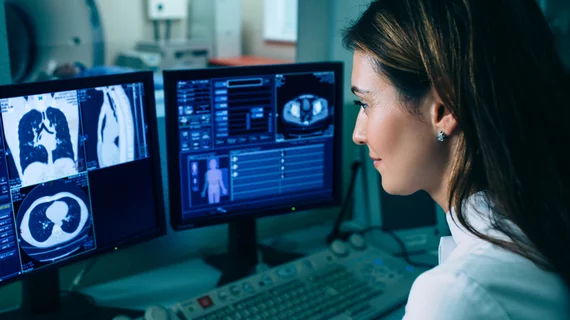Tracking down patients’ prior studies is a time-consuming aspect of radiologist workflow, but new research suggests deep learning could help significantly reduce that burden.
Published in Academic Radiology on May 18, the study details how experts were able to shave approximately 40% off radiologists’ interpretation times by using a deep learning tool to identify patients’ prior relevant imaging. Not only was the tool—TimeLens—effective at identifying exams, it also flagged findings of interest from prior exams for radiologists to review.
The authors of the new paper suggested that reducing radiologists’ time spent on manually tracking down priors would be of great benefit to both patients and providers.
“The time-intensive nature of this longitudinal assessment is not only suboptimal in the setting of increasing radiology workloads, but can also result in limited review of relevant prior examinations, putting interpretive accuracy and report quality at risk,” corresponding author Thomas Weikert, MD, with the Department of Radiology at University Hospital Basel in Switzerland, and colleagues noted.
TimeLens is based on natural language processing and descriptor-based image-matching algorithms. The team assessed reader interpretation times and habits (clicks, mouse movements, etc.) when using the tool on 3,872 series of 246 radiology examinations from 75 patients (189 CTs, 95 MRIs).
Its use dropped the average time needed to examine a finding at all timepoints from 107 seconds to 65 seconds, with pulmonary nodule assessments benefiting from the greatest reductions. Since the tool identified relevant priors for the readers, its use also reduced clicks by more than 17% and mouse travel by 38%.
Another interesting takeaway made was that residents involved in the analysis were quicker when using the tool compared to more seasoned radiologists. The authors explained that this is likely attributable to the idea that today’s residents are “digital natives” that can adapt to new technologies easier.
Although exploring the financial impact of how time saved from not having to locate prior imaging is difficult to understand completely, the team was able to use NHS data to make an estimation; based on statistics reporting 780,000 cross-sectional imaging examinations with an average of 3 findings per study requiring comparison in August of 2021, use of the deep learning tool would have saved 1,145 days of reading time within the NHS system alone.
The study abstract is available here.

